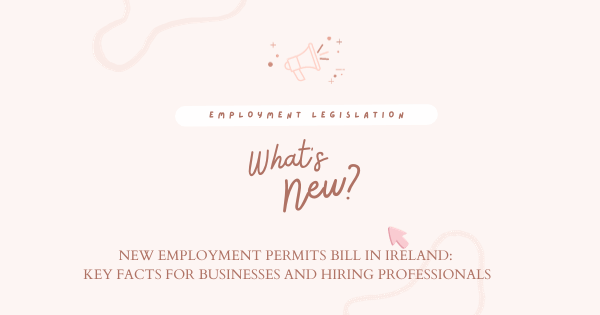
Cost-Benefit Analysis of Temporary vs Permanent Administrative Staff
In the dynamic world of business, managing seasonal projects effectively presents a significant challenge for many organisations. As a temporary recruitment agency, we frequently support clients during their peak periods, such as accounting firms preparing for the end of the tax year or telecoms companies bracing for seasonal spikes in demand, particularly during holidays or major events.
For instance, during the holiday season, people make more calls, send more messages, and use more data to connect with friends and family. To handle this surge, telecoms companies may need to bring in additional staff for customer support, increased call volumes, and network management. They also turn to temporary recruitment agencies for network upgrades and maintenance, hiring extra technicians and engineers to install new equipment, upgrade infrastructure, and perform routine maintenance. By employing temporary staff, telecoms companies ensure their networks remain stable and reliable during high-demand periods.
If you’re considering our services but are uncertain about whether to hire staff permanently due to perceived cost savings and the potential for year-round support in other areas of your business, this article is for you. We have crafted a cost-benefit analysis to provide the insights needed to make an informed decision that best suits your business needs.
To illustrate this, we present a hypothetical scenario involving a charity, such as a Social Housing Organisation, which annually reviews thousands of applications from individuals seeking rent reviews and affordable accommodation. Assume these applications are submitted by post to ensure a fair process for all service users.
This review process is meticulous, requiring each application to be handled individually, scanned, and uploaded to an online system for further review by senior staff and the legal team. Our case study explores the cost-benefit analysis of hiring temporary versus permanent administrative staff for this critical yet seasonal task.
The Scenario
This year, the charity received over 7,500 applications by post. Each application needs to be reviewed administratively and uploaded to an online system. The charity typically handles this task twice a year, necessitating additional workforce for these peak periods. In this scenario we will assume, they employ five temporary staff members for eight weeks to manage this workload. Given the menial nature of the work, which involves repetitive tasks such as scanning and data entry, the average wage for this role is slightly above the minimum wage in order to attract applications.
Cost Analysis
To understand the financial implications, let’s break down the costs of hiring temporary versus permanent staff.
Permanent Staff Costs
Assuming the average wage for this administrative role is €14.00 per hour, the annual salary cost for one permanent employee would be:
- Annual Salary: €14.00/hour * 40 hours/week * 52 weeks/year = €29,120
For two permanent employees, the cost would be:
- Total Annual Salary for Two Employees: €29,120 * 2 = €58,240
In addition to salaries, employers must account for benefits and other overhead costs:
- Benefits (Healthcare, Retirement, etc.): Estimated at 30% of salary = €58,240 * 0.30 = €17,472
- Total Cost for Two Permanent Employees: €58,240 + €17,472 = €75,712
Temporary Staff Costs
For temporary staff hired for eight weeks, the cost is calculated based on the hourly rate and additional charges. Let’s assume a slightly higher rate due to the short-term nature:
- Hourly Wage: €14.50/hour
- Weekly Hours: 40
- Number of Weeks: 8
- Number of Temporary Staff: 5
Direct Wages for Temporary Staff:
- Total Direct Wage Cost: €14.50/hour * 40 hours/week * 8 weeks * 5 staff = €23,200
Recruitment agencies typically include additional charges in the bill rate for temporary staff, covering Public Holiday Entitlement, TAX, PRSI contributions, and other statutory benefits. These charges are approximately 30% of the direct wage cost:
- Additional Charges: €23,200 * 0.30 = €6,960
- Total Cost for Temporary Staff: €23,200 + €6,960 = €30,160
Operational Efficiency
Permanent Staff:
With only two permanent staff members, the workload per person would double, significantly extending the time required to complete the project. This inefficiency could delay the review process, impacting the charity’s ability to provide timely assistance.
Temporary Staff:
With five temporary staff members, the workload is distributed more evenly, ensuring the project is completed within the eight-week timeframe. This efficiency is crucial for maintaining the charity’s operational deadlines.
Flexibility and Specialisation
Temporary staffing provides the flexibility to scale the workforce up or down based on the workload, ensuring that the organisation is not burdened with unnecessary labour costs during off-peak periods. Temporary workers can be hired specifically for their skills in administrative tasks, ensuring efficiency during the peak workload without the long-term commitment.
Employee Satisfaction and Retention
The repetitive nature of the work may lead to dissatisfaction and high turnover if done by permanent staff, as employees often seek more fulfilling roles. Temporary roles attract individuals seeking short-term employment, reducing the risk of dissatisfaction. These workers are more likely to be motivated to complete the project efficiently within the set period.
Hypothetical Example: Cost Calculation
Let’s consider the charity’s seasonal project. Hiring five temporary staff for eight weeks costs €30,160. If the charity opted for two permanent employees, the annual cost would be €75,712, not including the potential need for overtime pay during peak periods.
Comparative Analysis:
- Temporary Staff (8 weeks): €30,160
- Permanent Staff (Annual): €75,712
By hiring temporary staff, the charity can save €45,552 annually, while ensuring that the peak workload is managed efficiently and within the necessary timeframe. Additionally, this approach allows the charity to maintain financial flexibility and allocate resources more effectively.
Conclusion
Given the seasonal nature of the charity’s project and the need for flexibility, hiring temporary administrative staff is the ideal solution. Temporary staff provide the necessary workforce to handle peak workloads without the long-term financial commitment and operational inefficiencies associated with permanent employees. This approach ensures the charity can meet its deadlines and maintain a fair review system for applicants while managing costs effectively.
By leveraging the benefits of temporary staffing, organisations can maintain high levels of efficiency, flexibility, and cost-effectiveness, ensuring that both their operational and financial goals are met.



